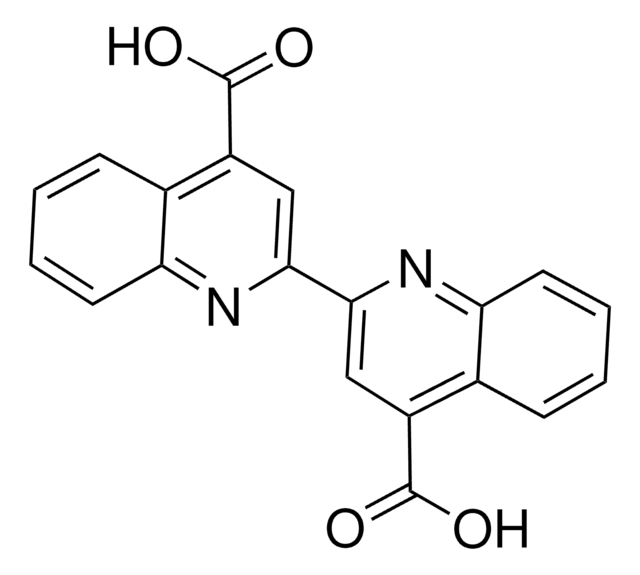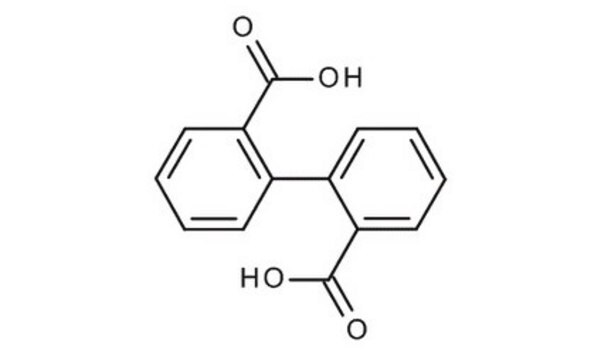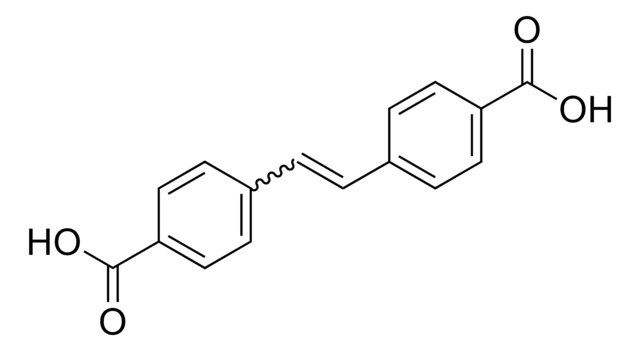517763
2,2′-Bipyridine-5,5′-dicarboxylic acid
97%
Synonim(y):
6,6′-Binicotinic acid
About This Item
Polecane produkty
Próba
97%
mp
>360 °C (lit.)
ciąg SMILES
OC(=O)c1ccc(nc1)-c2ccc(cn2)C(O)=O
InChI
1S/C12H8N2O4/c15-11(16)7-1-3-9(13-5-7)10-4-2-8(6-14-10)12(17)18/h1-6H,(H,15,16)(H,17,18)
Klucz InChI
KVQMUHHSWICEIH-UHFFFAOYSA-N
Szukasz podobnych produktów? Odwiedź Przewodnik dotyczący porównywania produktów
Opis ogólny
Zastosowanie
- Zn-MOFs Containing Pyridine and Bipyridine Carboxylate Organic Linkers and Open Zn2+ Sites: This study discusses the synthesis and characterization of Zinc-based Metal-Organic Frameworks (MOFs) utilizing 2,2′-Bipyridine-5,5′-dicarboxylic acid as a linker, showing potential applications in gas storage and separation (J Kim et al., 2015).
- Ethylene oligomerization in metal organic frameworks bearing nickel (ii) 2, 2′-bipyridine complexes: Reports the use of 2,2′-Bipyridine-5,5′-dicarboxylic acid in Nickel-based MOFs for catalyzing ethylene oligomerization, highlighting the versatility of MOFs in catalysis (MI Gonzalez et al., 2017).
- Two 3-D metal organic frameworks containing 2, 2′-bipyridine-5, 5′-dicarboxylic acid: synthesis, structure, and magnetic properties: Discusses the synthesis and magnetic properties of two 3-D MOFs built with 2,2′-Bipyridine-5,5′-dicarboxylic acid, demonstrating potential for advanced material applications (M Fang et al., 2014).
Hasło ostrzegawcze
Warning
Zwroty wskazujące rodzaj zagrożenia
Zwroty wskazujące środki ostrożności
Klasyfikacja zagrożeń
Eye Irrit. 2 - Skin Irrit. 2 - STOT SE 3
Organy docelowe
Respiratory system
Kod klasy składowania
11 - Combustible Solids
Klasa zagrożenia wodnego (WGK)
WGK 3
Temperatura zapłonu (°F)
Not applicable
Temperatura zapłonu (°C)
Not applicable
Środki ochrony indywidualnej
dust mask type N95 (US), Eyeshields, Gloves
Certyfikaty analizy (CoA)
Poszukaj Certyfikaty analizy (CoA), wpisując numer partii/serii produktów. Numery serii i partii można znaleźć na etykiecie produktu po słowach „seria” lub „partia”.
Masz już ten produkt?
Dokumenty związane z niedawno zakupionymi produktami zostały zamieszczone w Bibliotece dokumentów.
Klienci oglądali również te produkty
Nasz zespół naukowców ma doświadczenie we wszystkich obszarach badań, w tym w naukach przyrodniczych, materiałoznawstwie, syntezie chemicznej, chromatografii, analityce i wielu innych dziedzinach.
Skontaktuj się z zespołem ds. pomocy technicznej
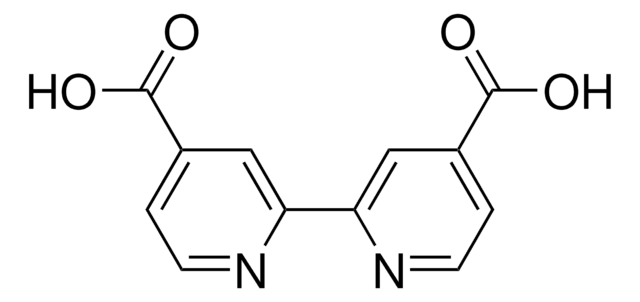
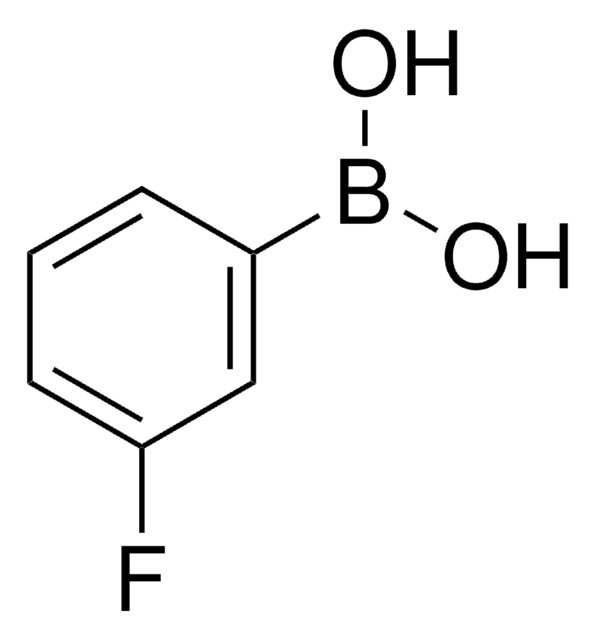
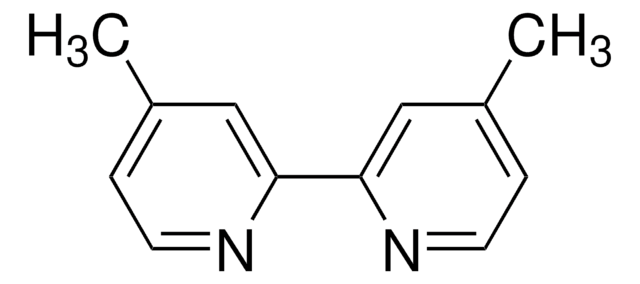
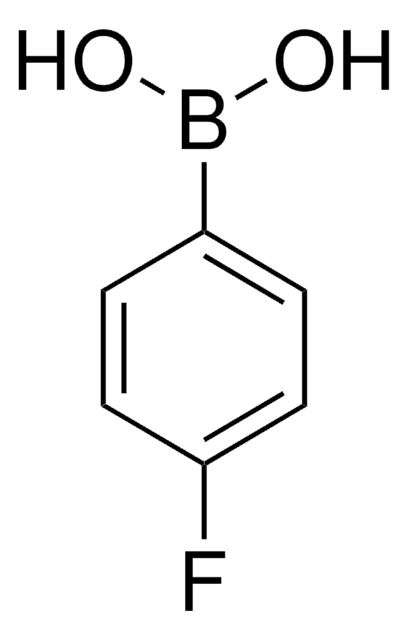
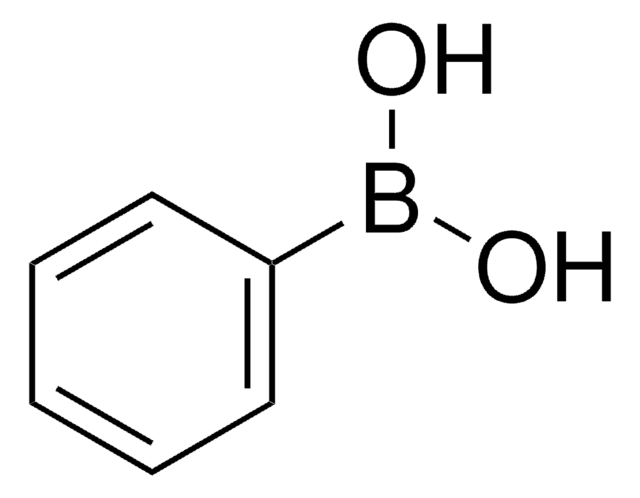
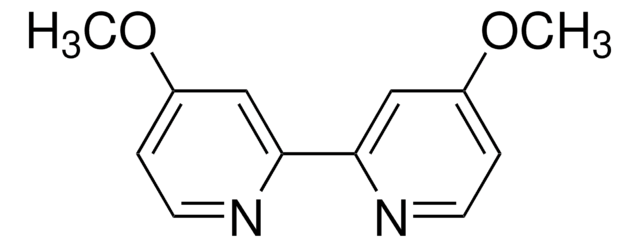
![[Pd(OAc)2]3 reagent grade, 98%](/deepweb/assets/sigmaaldrich/product/structures/508/249/99a0ef2c-b77c-4d73-8ed9-0cca05b6b41f/640/99a0ef2c-b77c-4d73-8ed9-0cca05b6b41f.png)
![1,4-Diazabicyclo[2.2.2]octane ReagentPlus®, ≥99%](/deepweb/assets/sigmaaldrich/product/structures/366/129/a6ff4175-974d-4fac-9038-b35e508ef252/640/a6ff4175-974d-4fac-9038-b35e508ef252.png)

